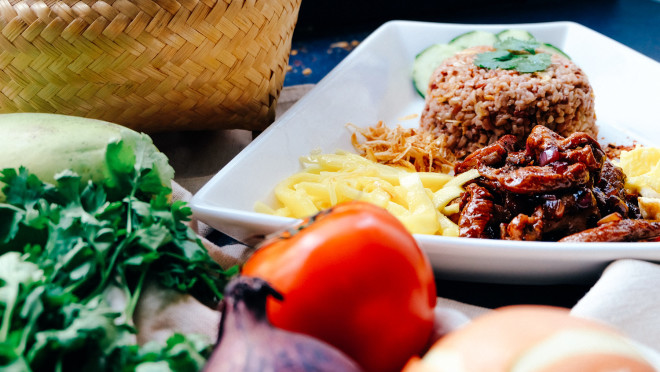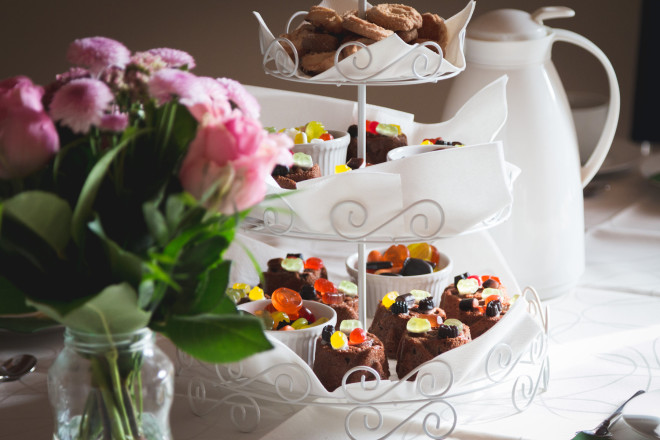
Perceived value makes people spend more.
According to a consulting firm, your menu should express your restaurant’s personality, focus on your overall business goals, promote your profitability and entice your customers.
To accomplish those goals and do them well, you have to concentrate on your menu engineering. It’s not as simple as listing your items and scribbling a price. You’ve got to think about it.
In this article, we look at the psychology of menu design, and why it’s so important.
The Golden Triangle
Take a look at your restaurant menu and take note of where your eyes move first.
For most people, their eyes look at the middle, then they travel to the top right corner and finally to the top left corner.
Restaurant menu engineers call this the Golden Triangle.
What to put here? This is where your dishes with the highest profit margins land. This doesn’t necessarily mean your most expensive menu items, just the most profitable.
You can consider these areas your high rent areas. If you put these items in these areas, and they don’t meet your profitability goals, consider trying other dishes in these spots.
It pays to monitor your progress so you know what really belongs in the Golden Triangle and what doesn’t. (tweet this)
Lastly, in each Golden Triangle area, you can include more than one dish. Just know that the first and second items listed are usually the top selling items, and list the rest in descending order.
Color is Definitive
Another way to use psychology to your advantage in your menu design is with color.
Here are some basic tips when using color:
- When your customers see the color green, it makes them think of fresh food, just picked from the garden.
- When customers see orange, it stimulates their appetite. Orange is a fun, light color with delicious qualities. Plus, the color stimulates the brain by increasing its oxygen supply. Orange is also associated with healthy food.
- Yellow makes people happy, and you can use it on your menu to grab the reader’s attention. Yellow can also stimulate a diner’s appetite.
- If you use red on your menu, it’s an attention-grabber. It makes people stand up and take notice. You can use red to guide people to the dishes you really want them to order.
The Use of Dollar Signs
When it comes to pricing your menu, how you do it matters.
One source says that removing dollar signs from a menu makes people spend more money.
Why is this? When you remove the dollar signs, you take away the “real” or perceived value of the meal. It just doesn’t feel like you’re spending money when the dollar signs disappear.
The same source goes on to say that spelling out the price – ten dollars instead of 10 – makes diners spend more.
Other ways to get your customers to spend more on your menu include:
- Throw some very expensive dishes on your menu, even if you don’t ever serve them. This makes the other menu items look like a deal.
- End your prices with .95. For example, make your burger 10.95 instead of 11. This just seems less expensive even though it really isn’t. Stay away from prices ending in .99 because that seems cheap.

The imagination is a powerful tool when it comes to menu design.
Appeal to the Imagination
Use the description of your menu items to play into the psychology of the purchase. (tweet this)
Use creative descriptions like freshly-picked, recently harvested, line-caught, home-brewed and chef designed to entice your diners.
You want them to imagine the process of someone bringing the food to the table.
Stay away from superlatives as you can bet diners will ignore them because they are too fantastic to believe.
Another trick is to use nostalgia in your description. It’s a powerful driver when it comes to diners.
For example, try Aunt Mabel’s Renowned Fried Chicken instead of simply friend chicken.
This makes diners feel like they’re ordering something really special – a blast from the past that is worth the money.
List Management Matter
If you have 10 items to list under a category, for example, pasta dishes, pay attention to the order of the list.
Manage your list so that the top items you want to sell are in the top spots. Most customers subconsciously order from either the top two or the bottom option in a list of menu items.
Put your most cost-effective dishes in these prime spots.
Decoys are Smart
We touched on this a bit above, and we want to reiterate the importance of guiding your customers to order what you want them to order.
You can manipulate customers into ordering more if it seems like they’re saving money by not purchasing the more expensive menu item. It gives the impression of a bargain.
People then end up spending more than the highest dollar item.
Where does this smart decoy go? Put it near the top so everything else seems better priced.
What’s more, when you showcase slightly more expensive items, it makes your entire menu look better and suggest your food is of exceptionally high quality.
Let’s look at the Science Daily study. They found that people set their expectations based on the price of the menu item.
They offered two groups of people an all-you-can-eat Italian buffet. Some were charged $4, while others were charged $8.
They then asked diners to rate the food. Even though it was exactly the same, the people who paid $8 rated their food higher.
The lesson here – think twice before you lowball your items. People may be willing to pay more because they perceive the value to be better.
Final Thoughts
The strategic importance of designing your menu can’t be understated. A well-crafted menu can mean the difference between profits and loss.
Your restaurant menu is more than just a random list of your items followed by prices and perhaps a photo.
A strategically planned menu is easy to navigate, skilled at the upsell and the best way to promote your menu items.
Finally, think of your restaurant menu as your silent salesperson. It can do the heavy lifting for you if you’ve crafted it correctly.
Take some of these ideas and give your restaurant menu a good, hard look. If it doesn’t involve psychology of the menu design, perhaps it’s time for a revision.
Do you have a great online menu? Is it user-friendly and enticing to your website visitors? If not, or you’d like a website tune-up and refresh, contact us for your free website consultation. We’ll make sure your well-engineered menu is delectably tantalizing and user friendly for your site visitors.
Images: Shanice Garcia and Lucas Alexander
No comments:
Post a Comment